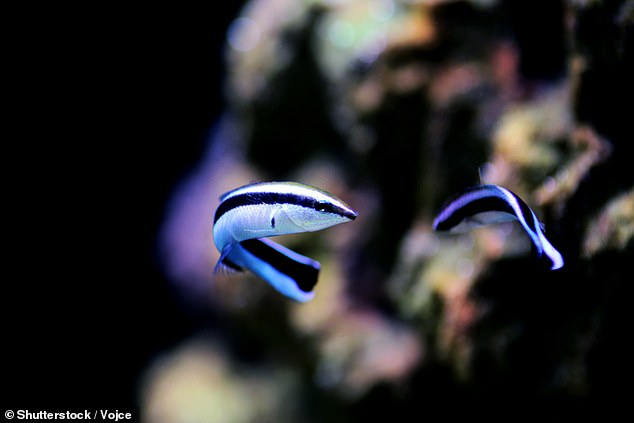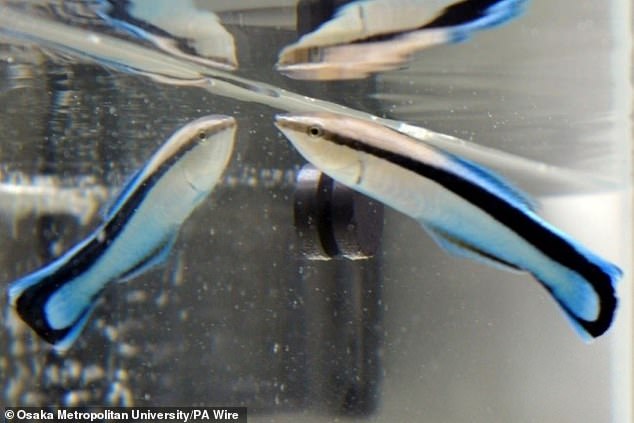Researchers have discovered that a small tropical fish measures itself in a mirror before attacking another fish, suggesting they have sophisticated self-awareness.
The blue cleaner wrasse, a finger-sized, territorial coral reef fish, was the first fish to pass the “mirror test.”
Scientists use this assessment to determine whether an animal recognizes its reflection as its own body and not that of another animal.
Now, a new study has found that this fish not only knows when it’s looking at itself, but uses its reflection to compare the size of its own body to the size of a threat.
A new study has found that cleaner wrasse measure themselves in a mirror before attacking another fish.
“Our study established that the cleaner wrasse is the first non-human animal to be shown to possess private self-awareness,” the researchers said in their report.
The research team, led by Taiga Kobayashi at Osaka Metropolitan University in Japan, Two types of tests were performed on 15 wrasses.
Each fish was tested individually and the team published their findings in Scientific reports.
The first test assessed the fish’s willingness to attack. Researchers showed a wrasse in a fish tank an image of another wrasse that was either 10 percent larger or smaller than the live fish.
No matter the size of the fish in the photo, the real ones attacked.
The researchers next tested whether the presence of a mirror would influence the fish’s decision to fight.
They repeated the first test while showing a mirror to the live fish.
The tank was divided to prevent the fish from seeing their own reflection and the photo at the same time.

After looking in the mirror, the fish fought with the photo of a smaller fish, but not with the photo of a larger one.

These findings should help scientists better understand self-awareness not only in other animals, but also in humans.
This time, the researchers found that live fish looked at their reflection before deciding whether to fight or not, and this seemed to influence their choice.
After looking in the mirror, the live fish only attacked the image of the smaller fish, not the image of the larger one.
This suggests the fish prepared for the threat, weighing the risk of attacking before making a decision.
“This was unexpected because we had the image that this fish always shows aggression against its rivals, regardless of size,” Kobayashi said. New scientist.
This is the first time that a non-human animal has demonstrated some mental states (such as mental body image, standards, intentions, and goals) that are elements of “private consciousness,” or awareness of one’s own internal state.
“These findings suggest that cleaner fishes likely possessed two mental states: a mental image of their body and internal standards for comparing body size,” the researchers said in their report.
But there are no mirrors in the ocean, which raises an important question: how did the blue cleanerfish evolve to have this unique ability?
In both the wild and in the lab, fish benefit from being able to compare their own size to that of a threat before attacking, Kobayashi told New Scientist. The results of this study suggest that fish are intelligent enough to use the mirror as a decision-making tool, he said.
These findings have important implications for our understanding of self-awareness not only in other animals, but also in humans.
“The findings that fish can use the mirror as a tool may help clarify the similarities between self-awareness in humans and non-human animals and provide important clues to elucidate how self-awareness has evolved,” Kobayashi said in a press release.

